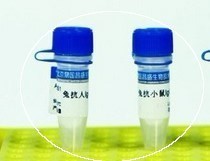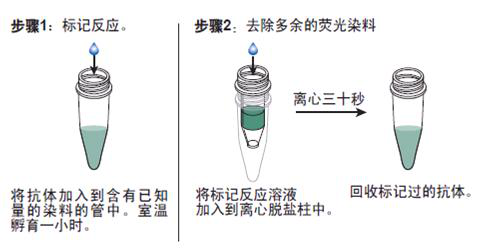
|

| 产地 | 进口、国产 |
| 品牌 | 上海莼试 |
| 保存条件 | Store at -20 °C |
| 货号 | CS11440 |
| 应用范围 | WB=1:100-500 ELISA=1:500-1000 IP=1:20-100 IHC-P=1:100-500 IHC-F=1:100-500 IF=1:100-500 |
| CAS编号 | |
| 抗体名 | Anti-phospho-Src(Tyr418) |
| 克隆性 | |
| 靶点 | 详见说明书 |
| 适应物种 | 详见说明书 |
| 形态 | 详见说明书 |
| 宿主 | 详见说明书 |
| 亚型 | IgG |
| 标识物 | 详见说明书 |
| 浓度 | 1mg/1ml% |
| 免疫原 | KLH conjugated Synthesised phosphopeptide derived from mouse Src around the phosphorylation site of Tyr418 |
产品订购信息:
英文名称 Anti-phospho-Src(Tyr418)
中文名称 磷酸化Src原癌基因抗体说明书
别 名 ASV; Avian sarcoma virus; c SRC; CDNA FLJ14219 fis clone NT2RP3003800 highly similar to Rattus norvegicus tyrosine protein kinase pp60 c src mRNA; cSrc; EC 2.7.10.2; Neuronal CSRC tyrosine specific protein kinase; Neuronal SRC; Oncogene SRC; OTTHUMP00000030931; OTTHUMP00000174476; OTTHUMP00000174477; p60 Src; p60-Src; p60Src; pp60c src; pp60c-src; pp60csrc; Proto oncogene tyrosine protein kinase Src; Proto-oncogene c-Src; Proto-oncogene tyrosine-protein kinase Src; Protooncogene SRC; protooncogene SRC Rous sarcoma; Src; SRC Oncogene; SRC_HUMAN; SRC1; Tyrosine kinase pp60c src; Tyrosine protein kinase SRC 1; Tyrosine protein kinase SRC1; v src avian sarcoma (Schmidt Ruppin A2) viral oncogene homolog; V src sarcoma (Schmidt Ruppin A 2) viral oncogene homolog (avian); v src sarcoma (Schmidt Ruppin A 2) viral oncogene homolog avian; vsrc avian sarcoma (Schmidt Ruppin A2) viral oncogene homolog.


浓 度 1mg/1ml
规 格 0.1ml/100μg
抗体来源 Rabbit
克隆类型 polyclonal
交叉反应 Human, Mouse, Rat, Chicken, Pig, Sheep
产品类型 一抗 磷酸化抗体
研究领域 细胞生物 免疫学 染色质和核信号 信号转导 转录调节因子 激酶和磷酸酶 表观遗传学
蛋白分子量 predicted molecular weight: 60kDa
性 状 Lyophilized or Liquid
免 疫 原 KLH conjugated Synthesised phosphopeptide derived from mouse Src around the phosphorylation site of Tyr418
亚 型 IgG
纯化方法 affinity purified by Protein A
储 存 液 0.01M PBS, pH 7.4 with 10 mg/ml BSA and 0.1% Sodium azide
磷酸化Src原癌基因抗体说明书 产品应用 WB=1:100-500 ELISA=1:500-1000 IP=1:20-100 IHC-P=1:100-500 IHC-F=1:100-500 IF=1:100-500
(石蜡切片需做抗原修复)
not yet tested in other applications.
optimal dilutions/concentrations should be determined by the end user.
保存条件 Store at -20 °C for one year. Avoid repeated freeze/thaw cycles. The lyophilized antibody is stable at room temperature for at least one month and for greater than a year when kept at -20°C. When reconstituted in sterile pH 7.4 0.01M PBS or diluent of antibody the antibody is stable for at least two weeks at 2-4 °C.
Important Note This product as supplied is intended for research use only, not for use in human, therapeutic or diagnostic applications.
产品介绍 Src (also known as pp60src) is a non receptor Tyrosine Kinase involved in signal transduction in many biological systems and implicated in the development of human tumors. There are two critical phosphorylation sites of tyrosine on Src, tyrosine 418 and tyrosine 529 (referring to human Src sequence). The tyrosine 418 is located in the catalytic domain and is one of the autophosphorylation sites. Full catalytic activity of Src requires phosphorylation of tyrosine 418. The tyrosine 529 is located near the carboxyl terminus of Src and acts as a negative regulator, in that Src is held in the inactive form through an intramolecular interaction between the SH2 domain and the carboxyl terminus when tyrosine 529 is phosphorylated by Csk. This conformation blocks phosphorylation of tyrosine 418 at the catalytic domain, thereby preventing Src activation. When tyrosine 529 is dephosphorylated, tyrosine 418 can be maximally phosphorylated and Src becomes active. Src is a proto oncogene that may play a role in the regulation of embryonic development and cell growth. Mutations in this gene could be involved in the malignant progression of colon cancer. Immunogen: Synthetic peptide (Human) derived from the region of Src that contains tyrosine 529, based on the human sequence. The sequence is conserved in mouse (tyrosine 534), chicken (tyrosine 527) and frog (tyrosine 525).
Function : Non-receptor protein tyrosine kinase which is activated following engagement of many different classes of cellular receptors including immune response receptors, integrins and other adhesion receptors, receptor protein tyrosine kinases, G protein-coupled receptors as well as cytokine receptors. Participates in signaling pathways that control a diverse spectrum of biological activities including gene transcription, immune response, cell adhesion, cell cycle progression, apoptosis, migration, and transformation. Due to functional redundancy between members of the SRC kinase family, identification of the specific role of each SRC kinase is very difficult. SRC appears to be one of the primary kinases activated following engagement of receptors and plays a role in the activation of other protein tyrosine kinase (PTK) families. Receptor clustering or dimerization leads to recruitment of SRC to the receptor complexes where it phosphorylates the tyrosine residues within the receptor cytoplasmic domains. Plays an important role in the regulation of cytoskeletal organization through phosphorylation of specific substrates such as AFAP1. Phosphorylation of AFAP1 allows the SRC SH2 domain to bind AFAP1 and to localize to actin filaments. Cytoskeletal reorganization is also controlled through the phosphorylation of cortactin (CTTN). When cells adhere via focal adhesions to the extra-cellular matrix, signals are transmitted by integrins into the cell resulting in tyrosine phosphorylation of a number of focal adhesion proteins, including PTK2/FAK1 and paxillin (PXN). In addition to phosphorylating focal adhesion proteins, SRC is also active at the sites of cell-cell contact adherens junctions and phosphorylates substrates such as beta-catenin (CTNNB1), delta-catenin (CTNND1), and plakoglobin (JUP). Another type of cell-cell junction, the gap junction, is also a target for SRC, which phosphorylates connexin-43 (GJA1). SRC is implicated in regulation of pre-mRNA-processing and phosphorylates RNA-binding proteins such as KHDRBS1. Also plays a role in PDGF-mediated tyrosine phosphorylation of both STAT1 and STAT3, leading to increased DNA binding activity of these transcription factors. Involved in the RAS pathway through phosphorylation of RASA1 and RASGRF1. Plays a role in EGF-mediated calcium-activated chloride channel activation. Required for epidermal growth factor receptor (EGFR) internalization through phosphorylation of clathrin heavy chain (CLTC and CLTCL1) at 'Tyr-1477'. Involved in beta-arrestin (ARRB1 and ARRB2) desensitization through phosphorylation and activation of ADRBK1, leading to beta-arrestin phosphorylation and internalization. Has a critical role in the stimulation of the CDK20/MAPK3 mitogen-activated protein kinase cascade by epidermal growth factor. Might be involved not only in mediating the transduction of mitogenic signals at the level of the plasma membrane but also in controlling progression through the cell cycle via interaction with regulatory proteins in the nucleus. Plays an important role in osteoclastic bone resorption in conjunction with PTK2B/PYK2. Both the formation of a SRC-PTK2B/PYK2 complex and SRC kinase activity are necessary for this function. Recruited to activated integrins by PTK2B/PYK2, thereby phosphorylating CBL, which in turn induces the activation and recruitment of phosphatidylinositol 3-kinase to the cell membrane in a signaling pathway that is critical for osteoclast function. Promotes energy production in osteoclasts by activating mitochondrial cytochrome C oxidase. Phosphorylates DDR2 on tyrosine residues, thereby promoting its subsequent autophosphorylation. Phosphorylates RUNX3 and COX2 on tyrosine residues, TNK2 on 'Tyr-284' and CBL on 'Tyr-731'. Enhances DDX58/RIG-I-elicited antiviral signaling. Phosphorylates PDPK1 at 'Tyr-9', 'Tyr-373' and 'Tyr-376'.
Subunit : Interacts with DDEF1/ASAP1; via the SH3 domain. Interacts with CCPG1. Identified in a complex containing FGFR4, NCAM1, CDH2, PLCG1, FRS2, SRC, SHC1, GAP43 and CTTN (By similarity). Interacts with ERBB2, STAT1 and PNN (By similarity). Interacts with CDCP1, PELP1, TGFB1I1 and TOM1L2. Interacts with the cytoplasmic domain of MUC1, phosphorylates it and increases binding of MUC1 with beta-catenin. Interacts with RALGPS1; via the SH3 domain. Interacts with HEV ORF3 protein; via the SH3 domain. Interacts with CAV2 (tyrosine phosphorylated form). Interacts (via the SH3 domain and the protein kinase domain) with ARRB1; the interaction is independent of the phosphorylation state of SRC C-terminus. Interacts with ARRB1 and ARRB2. Interacts with SRCIN1. Interacts with NDFIP2 and more weakly with NDFIP1. Interacts with PIK3CA and/or PIK3C2B, PTK2/FAK1 and ESR1 (dimethylated on arginine). Interacts with FASLG. Interacts (via SH2 domain) with the 'Tyr-402' phosphorylated form of PTK2B/PYK2. Interacts (via SH2 domain) with FLT3 (tyrosine phosphorylated). Interacts with PDGFRA (tyrosine phosphorylated). Interacts with CSF1R (By similarity). Interacts (via SH2 and SH3 domain) with TNK2. Interacts (via protein kinase domin) with the tyrosine phosphorylated form of RUNX3 (via runt domain). Interacts with TRAF3 (via RING-type zinc finger domain). Interacts with DDX58, MAVS and TBK1. Interacts (via SH2 domain) with GNB2L1/RACK1; the interaction is enhanced by tyrosine phosphorylation of GNB2L1 and inhibits SRC activity. Interacts with EPHB1; activates the MAPK/ERK cascade to regulate cell migration. Interacts with FCAMR. Interacts (via SH2 domain) with the 'Tyr-9' phosphorylated form of PDPK1.
Subcellular Location : Cell membrane. Mitochondrion inner membrane. Nucleus. Cytoplasm, cytoskeleton. Note=Localizes to focal adhesion sites following integrin engagement. Localization to focal adhesion sites requires myristoylation and the SH3 domain.
Tissue Specificity : Expressed ubiquitously. Platelets, neurons and osteoclasts express 5-fold to 200-fold higher levels than most other tissues.
Post-translational modifications : Myristoylated at Gly-2, and this is essential for targeting to membranes.
Dephosphorylated at Tyr-530 by PTPRJ (By similarity). Phosphorylated on Tyr-530 by c-Src kinase (CSK). The phosphorylated form is termed pp60c-src. Dephosphorylated by PTPRJ at Tyr-419. Normally maintained in an inactive conformation with the SH2 domain engaged with Tyr-530, the SH3 domain engaged with the SH2-kinase linker, and Tyr-419 dephosphorylated. Dephosphorylation of Tyr-530 as a result of protein tyrosine phosphatase (PTP) action disrupts the intramolecular interaction between the SH2 domain and Tyr-530, Tyr-419 can then become autophosphorylated, resulting in SRC activation. Phosphorylation of Tyr-530 by CSK allows this interaction to reform, resulting in SRC inactivation. CDK5-mediated phosphorylation at Ser-75 targets SRC to ubiquitin-dependent degradation and thus leads to cytoskeletal reorganization. Phosphorylated by PTK2/FAK1; this enhances kinase activity. Phosphorylated by PTK2B/PYK2; this enhances kinase activity.
S-nitrosylation is important for activation of its kinase activity (By similarity).
Ubiquitinated in response to CDK5-mediated phosphorylation.
DISEASE : Note=SRC kinase activity has been shown to be increased in several tumor tissues and tumor cell lines such as colon carcinoma cells.
Similarity : Belongs to the protein kinase superfamily. Tyr protein kinase family. SRC subfamily.
Contains 1 protein kinase domain.
Contains 1 SH2 domain.
Contains 1 SH3 domain.
Database links : UniProtKB/Swiss-Prot: P12931.3

Anti-Integrin alpha V/CD51 /FITC 荧光素标记兔抗人、大、小鼠等整合素αV抗体IgGMulti-class antibodies规格: 0.2ml
CD45(LCA/gp180) CD45抗原(白细胞共同抗原)Multi-class antibodies规格: 0.5mg
NK细胞抑制性受体3DL1抗体 Anti-CD158e/KIR3DL1 0.1ml
STAT5 英文名称: 信号转导和转录激活因子5抗体 0.1ml
ELOVL6 英文名称: 长链脂肪酸延长酶长ELOVL6抗体 0.2ml
Rhesus antibody Rh phospho-GSK-3 Beta(Ser9) 磷酸化葡萄糖合成激酶3β抗体 规格 0.1ml
CD45(LCA/gp180) CD45抗原(白细胞共同抗原)Multi-class antibodies规格: 0.5mg
Anti-Phospho-PTEN (Ser380/Thr382/Thr383)/FITC 荧光素标记磷酸化抑制基因PTEN抗体IgGMulti-class antibodies规格: 0.2ml
OVA (ovalbumin) 鸡卵白蛋白Multi-class antibodies规格: 10mg
胰岛素受体底物-3抗体 Anti-IRS-3 0.2ml
Goat anti-rat IgG whole serum 羊抗大鼠IgG抗血清 1ml
FOXA2 英文名称: 肝细胞核因子3抗体 0.1ml
Rhesus antibody Rh Phospho-PRKACB(Thr198) 磷酸化蛋白激酶C亚性抗体 规格 0.1ml
OVA (ovalbumin) 鸡卵白蛋白Multi-class antibodies规格: 10mg
S6PDH(NADP sorbitol-6-phosphate dehydrogenase) 6-磷酸山梨醇脱氢酶抗原Multi-class antibodies规格: 0.5mg
Anti-Bcl-6/5 原癌基因Bcl-6抗体Multi-class antibodies规格: 0.2ml
Rhesus antibody Rh phgophs-ATG4C(Ser177) 磷酸化自噬相关蛋白4C抗体 规格 0.1ml
Inhibin,alpha 浓缩液 0.1ml 进口分装
Ubiquitin 英文名称: 泛素蛋白抗体 0.1ml
Complement C4 gamma chain 英文名称: 补体C4 γ 链蛋白抗体 0.1ml
Anti-Bcl-6/5 原癌基因Bcl-6抗体Multi-class antibodies规格: 0.2ml
IL17A Protein Mouse 重组小鼠 IL17 / IL17A 蛋白
小鼠视网膜色素上皮细胞完全培养基 100mL
SIRPA Others Mouse 小鼠 SIRP alpha / CD172a 人细胞裂解液 (阳性对照)
RAW 264.7小鼠单核巨噬细胞细胞 RAW 264.7 macrophages in leukemia cells DMEM+10% FBS
CM-H116人脑动脉平滑肌细胞完全培养基100mL
人少突胶质前体细胞(HOPC)(贴壁生长) 人间充质干细胞-肝 AGS人胃腺癌细胞
CM-H116人脑动脉平滑肌细胞完全培养基100mL
SIRPA Others Mouse 小鼠 SIRP alpha / CD172a 人细胞裂解液 (阳性对照)
小鼠视网膜色素上皮细胞完全培养基 100mL
RAW 264.7小鼠单核巨噬细胞细胞 RAW 264.7 macrophages in leukemia cells DMEM+10% FBS
IL17A Protein Mouse 重组小鼠 IL17 / IL17A 蛋白
人少突胶质前体细胞(HOPC)(贴壁生长) 人间充质干细胞-肝 AGS人胃腺癌细胞
磷酸化Src原癌基因抗体说明书 IL17A Protein Mouse 重组小鼠 IL17 / IL17A 蛋白
小鼠视网膜色素上皮细胞完全培养基 100mL
SIRPA Others Mouse 小鼠 SIRP alpha / CD172a 人细胞裂解液 (阳性对照)
RAW 264.7小鼠单核巨噬细胞细胞 RAW 264.7 macrophages in leukemia cells DMEM+10% FBS
CM-H116人脑动脉平滑肌细胞完全培养基100mL
人少突胶质前体细胞(HOPC)(贴壁生长) 人间充质干细胞-肝 AGS人胃腺癌细胞

抗体的生物素化标记实验要点:
1. 磷酸化Src原癌基因抗体说明书 如在反应混合液中有叠氮钠或游离氨基存在,会抑制标记反应。因此,蛋白质在反应前要对 0.1mol/L碳酸氢钠缓冲液或0.5mol/L硼酸缓冲液充分透析;
2.所用的NHSB及待生物素化蛋白质之间的分子比按蛋白质表面的ε-氨基的密度会有所不同,选择不当则影响标记的效率,应先用几个不同的分子比来筛选最适条件;
3.用NHSB量过量也是不利的,抗原的结合位点可能因此被封闭,导致抗体失活;
4.由于抗体的氨基不易接近可能造成生物素化不足,此时可加入去污剂如 Triton x-100, Tween20等;
5.当游离ε-氨基(赖氨酸残基的氨基)存在于抗体的抗原结合位点时,或位于酶的催化位点时,生物素化会降低或损伤抗体蛋白的结合力或活性;
6.生物素还可能与不同的功能基团,如羰基、氨基、巯基、异咪唑基及苯酚基,也可与糖基共价结合;
7.交联反应后,应充分透析,否则,残余的生物素会对生物素化抗体与亲和素的结合产生竞争作用;
8.在细胞的荧光标记实验中,中和亲和素的本底低,但由于链霉亲和素含有少量正电荷,故对某些细胞可导致高本底。
抗体的鉴定:
1)磷酸化Src原癌基因抗体说明书 抗体的效价鉴定:不管是用于诊断还是用于,制备抗体的目的都是要求较高效价。不同的抗原制备的抗体,要求的效价不一。鉴定效价的方法很多,包括有试管凝集反应,琼脂扩散试验,酶联免疫吸附试验等。常用的抗原所制备的抗体一般都有约成的鉴定效价的方法,以资比较。如制备抗抗体的效价,一般就采用琼脂扩散试验来鉴定。
2)抗体的特异性鉴定:抗体的特异性是指与相应抗原或近似抗原物质的识别能力。抗体的特异性高,它的识别能力就强。衡量特异性通常以交叉反应率来表示。交叉反应率可用竞争抑制试验测定。以不同浓度抗原和近似抗原分别做竞争抑制曲线,计算各自的结合率,求出各自在IC50时的浓度,并按公式计算交叉反应率。
如果所用抗原浓度IC50浓度为pg/管,而一些近似抗原物质的IC50浓度几乎是无穷大时,表示这一抗血清与其他抗原物质的交叉反应率近似为0,即该血清的特异性较好。
3)抗体亲和力:是指抗体和抗原结合的牢固程度。亲和力的高低是由抗原分子的大小,抗体分子的结合位点与抗原决定簇之间立体构型的合适度决定的。有助于维持抗原抗体复合物稳定的分子间力有氢键,疏水键,侧链相反电荷基因的库仑力,范德华力和空间斥力。亲和力常以亲和常数K表示,K的单位是L/mol。抗体亲和力的测定对抗体的筛选,确定抗体的用途,验证抗体的均一性等均有重要意义。